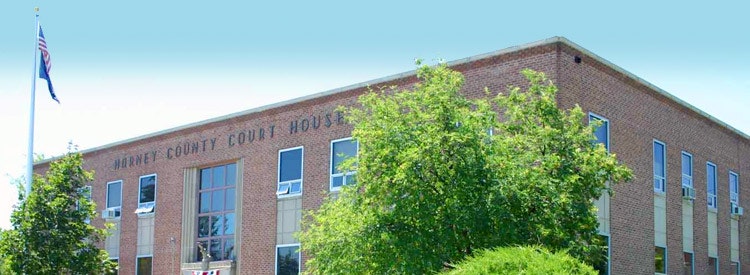Harney County Profile

Demographics
The population of Harney County was estimated at 7,393 in 2019, according to data from the U.S. Census Bureau. This represents a 0.4% decrease from 2010 and a population density of 0.7 persons per square mile. 61% of the population base is located within the city of Burns/Hines. https://www.census.gov/quickfacts/harneycountyoregon
Topography
Harney County is situated in the southeastern corner of Oregon. The county includes the furthermost northwestern tip of the Great Basin. The county is geographically in the Pacific Northwest, although it represents little of what many people imagine the region to be like. The county is one of the largest in the United States, covering 10,133 square miles, an area larger than some East Coast states. The geography of the county is very diverse, but a common trait is that it is very arid. The county’s vast and rugged landscape includes snow covered summits, green forests, lush valleys, and meadows to sagebrush and juniper dotted plains.
Land Use
Ownership of Harney County is approximately 25% private and 75% public (Federal and State). There are eight watersheds (8-digit HUC) within Harney County. These watersheds are the Upper Malheur, Silvies, Silver Creek, Harney /Malheur Lakes, Donner und Blitzen, Alvord Lake, Guano, and Thousand Virgin watersheds.
Land cover types for the eight watersheds are approximately 64% rangelands, 22% forest, and 9% crop or pasture land, with the remaining 5% covered by wetlands or water. Privately owned lands encompass 1.1 million acres of range; 410,500 acres of pasture, crop, and hayland; and 130,400 acres of industrial and non-industrial forest.
Today (as in the past) cattle ranching, timber and wood products, and irrigated hay are the major economic enterprises in the county. Climatic characteristics of this semi-arid region of the northern Great Basin limit the types of crops that can be produced. For this reason, irrigated grass hay and pasture and alfalfa hay dominate the agronomic operations.
